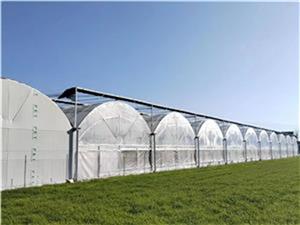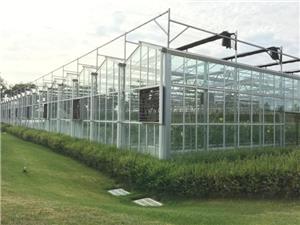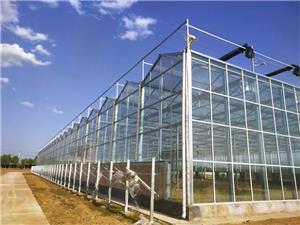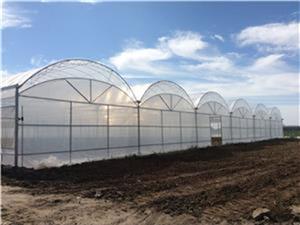Common Irrigation and Sprinkler Systems for Greenhouses
A agricultural greenhouses is a relatively enclosed production facility, where natural rainfall cannot be directly utilized. The water required by crops inside the agricultural greenhouses is entirely dependent on artificial irrigation measures to ensure their growth. Traditional flood irrigation causes significant waste of water resources and has low utilization efficiency. With the development of agricultural science and technology and the increasing scarcity of water resources in arid regions of China, water-saving irrigation technology has become an inevitable development trend.
As an important measure to support agricultural greenhouses, the sprinkler irrigation system is mainly composed of key components such as water sources, filters, water delivery pipelines, and sprinkler heads. In the actual production of greenhouses, the commonly used irrigation methods are mainly divided into two categories: drip irrigation and spray irrigation.
1. Drip Irrigation
Drip irrigation is a type of irrigation technology that delivers pressurized water to the soil in the form of droplets, specifically targeting the root zone of crops. In practical applications, there are two main installation methods for drip irrigation systems. One is to lay the capillary tubes and emitters directly on the ground, which is called surface drip irrigation. The other is to bury the main pipes and emitters 30-40 centimeters below the ground, known as subsurface drip irrigation. Regardless of the installation method, the flow rate of each emitter in the drip irrigation system is usually maintained at 1-12 liters per hour.
The adoption of drip irrigation technology offers significant advantages. Firstly, it can accurately deliver water to the root zone of crops. Except for the area around the crop roots which remains moist, other areas are always dry. This greatly reduces the evaporation of water from the ground and improves the utilization efficiency of water resources. Secondly, since the air humidity inside the agricultural greenhouses will not become excessively high due to irrigation, the risk of diseases and pests caused by a high-humidity environment is effectively reduced.
In addition, micro-sprinkler irrigation, as an extension of drip irrigation technology, is an irrigation method that wets the soil by spraying pressurized water. Micro-sprinkler heads are mainly divided into two types: rotary and refractive, with a flow rate generally ranging from 20 to 250 liters per hour. For crops with high water requirements, such as vegetables, using micro-irrigation for continuous, timed, quantitative, and fixed-point irrigation can fully meet the water needs of crops throughout their entire growth cycle. At the same time, this scientific irrigation method can also ensure that fruit and vegetable crops have a uniform shape and good appearance, thereby increasing crop yield and the economic income of growers.
2. Suspended Micro-Sprinkler and Micro-Mist Systems
In agricultural greenhouse irrigation, the spray irrigation system mainly realizes the irrigation function by suspending micro-sprinkler heads in the upper space of the greenhouse. The commonly used suspended micro-sprinkler heads include three types: rotary, refractive, and cross-shaped micro-mist. During the installation process, the water delivery pipelines are usually fixed at a height of 2.5 meters to 3.5 meters above the ground, and then micro-sprinkler heads with a determined spray diameter are installed on the pipelines at equal distances.
Among various types of suspended micro-sprinkler heads, the special cross-shaped atomizing micro-sprinkler has unique advantages. Compared with ordinary micro-sprinkler heads, it can more effectively regulate the temperature and humidity inside the agricultural greenhouses, with a wider spray range and more uniform water output. Based on these characteristics, this system is mainly suitable for the irrigation of crops with relatively tall plants, leafy vegetables, and agricultural greenhouses seedbeds in greenhouses, providing suitable water supply and environmental conditions for the growth of different types of crops.

Get the latest price? We'll respond as soon as possible(within 12 hours)
more products
News
Products
Featured Products
Contact Details
Phone :
Email :




